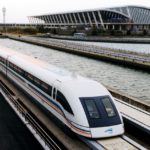1.Which of the following biom has no tree?
[A] Taiga [B] Tundra [C] Chaparal [D] Savanna
Correct Answer: B [टुन्ड्रा ]
Explanation:The Tundra region is located near the North Pole, due to the cold climate in this place, there is limited number of flora available here.
1.निम्नलिखित में से किस बायोम में पेड़ नहीं है?
[A] टैगा [B] टुन्ड्रा [C] चपरल [D] सवाना
Correct Answer: B [टुन्ड्रा ]
Explanation:टुन्ड्रा क्षेत्र उत्तरी ध्रुव के समीप स्थित है, इस स्थान पर जलवायु अत्याधिक शीत होने के कारण यहाँ पर सीमित संख्या में ही वनस्पति उपलब्ध है।
2.Which of the following statements is correct with respect to the vast plains of India?
- India has the largest aluminum deposits in India
- New Aluminum is available in Bangar than Khadar area
- Khadar area is located in low-lying areas
[A] only 1 and 2 [B] only 2 and 3 [C] only 1 and 3 [D] 1, 2 and 3
Correct Answer: C [only 1 and 3]
Explanation:The vast plains of the Ganga in north India are the largest aluminum deposits in the world, and fertile soil is deposited on it by rivers flowing from the Himalayas. Khadar region is composed of new aluminum, it is a low elevated area.
2.भारत के विशाल मैदानों के सम्बन्ध में निम्नलिखित में से कौन सा कथन सही है?
- भारत में विश्व का सबसे बड़ा अलुवियम निक्षेप पाया जाता है
- खादर क्षेत्र की अपेक्षा बांगर में न्यू अलुवियम है
- खादर क्षेत्र निम्न ऊंचाई वाले क्षेत्रों में स्थित है
[A] केवल 1 और 2 [B] केवल 2 और 3 [C] केवल 1 और 3 [D] 1, 2 और 3
Correct Answer: C [केवल 1 और 3 ]
Explanation:उत्तर भारत में गंगा के विशाल मैदान विश्व के सबसे बड़े अलुवियम निक्षेप हैं, हिमालय से बहने वाली नदियों द्वारा यह पर उपजाऊ मिट्टी का निक्षेप किया जाता है। खादर क्षेत्र की रचना नयी अलुवियम से हुई है, यह निम्न ऊंचाई युक्त क्षेत्र है।
3.What percentage of the total area of Rajasthan is located in Thar Desert?
[A] 30% [B] 40% [C] 60% [D] 70%
Correct Answer: C [60%]
Explanation:The Thar Desert is the 10th largest desert in the world. This desert is spread over an area of about 200,000 square kilometers in the Indian subcontinent.
3.राजस्थान के कुल क्षेत्रफल का कितना प्रतिशत हिस्सा थार मरुस्थल में स्थित है?
[A] 30% [B] 40% [C] 60% [D] 70%
Correct Answer: C [60%]
Explanation:थार मरुस्थल विश्व का 10 सबसे बड़ा मरुस्थल है। यह मरुस्थल भारतीय उपमहाद्वीप में लगभग 2,00,000 वर्ग किलोमीटर क्षेत्र में फैला हुआ है।
4.What is called snow due to melting, evaporation and avalanches from the glacier?
[A] erosion [B] gelling [C ] creep [D] plucking
Correct Answer: A [अपक्षरण ]
Explanation:In the glacier, it is called erosion, due to vaporization, melting or other reasons.
4.ग्लेशियर से पिघलने, वाष्पीकरण और हिमस्खलन के कारण बर्फ कम होने को क्या कहा जाता है?
[A] अपक्षरण [B] गलिंग [C] क्रीप [D] प्लकिंग
Correct Answer: A [अपक्षरण ]
Explanation:ग्लेशियर में वाष्पीकरण, पिघलने अथवा अन्य कारणों से बर्फ कम होने को अपक्षरण कहा जाता है।
5.Which of the following words are not used for glacier deposit?
[A] Morren [B] Drumlines [C] Kettle [D] scary
Correct Answer: D [स्केर्री ]
Explanation:
Scary is called the small rocky island, where the probability of human life is low. It is also called “low sea stack”.
5.ग्लेशियर निक्षेप के लिए निम्नलिखित में से कौन सा शब्द प्रयोग नहीं किया जाता?
[A] मोरेन [B] ड्रमलिन्स [C] केटल [D] स्केर्री
Correct Answer: D [स्केर्री ]
Explanation:स्केर्री छोटे से पथरीले द्वीप को कहा जाता है, जहाँ पर मानवीय जीवन यापन की सम्भावना कम होती है। इसे “लो सी स्टैक” भी कहा जाता है।
6.Which of the following is related to the Dampier-Hoges Line?
[A] Gulf of Khambat [B] Palk Strait [C] Andaman and Nicobar Islands [D] Sunderbans
Correct Answer: D [Sunderban]
Explanation:The Dampier-Hoges Line is a hypothetical line, which was drawn in 1829-30, this line reflects the northern boundary of Sunderbans Delta. This line is located parallel to the 24 Parganas district of West Bengal.
6.डेम्पिएर-होजेस रेखा निम्नलिखित में से किससे सम्बंधित है?
[A] खम्बात की खाड़ी [B] पल्क जलडमरूमध्य [C] अंदमान व निकोबार द्वीप समूह [D] सुंदरबन
Correct Answer: D [सुंदरबन ]
Explanation:डेम्पिएर-होजेस रेखा एक काल्पनिक रेखा है, जिसे 1829-30 में खींचा गया था, यह रेखा सुंदरबन डेल्टा की उत्तरी सीमा को दर्शाती है। यह रेखा पश्चिम बंगाल के 24 परगना जिले के समानांतर स्थित है।
7.What happens in India due to northwestern winds?
[A] Winter rain in north-eastern India [B] Winter rain in Chennai [C] storm in desert desert [D] Fierce winds in the Himalayas
Correct Answer: B [Winter Rain in Chennai]
Explanation:Due to north-eastern commercial winds, there is a winter rain in Chennai.
7.उत्तर-पश्चिमी पवनों के कारण भारत में क्या होता है?
[A] उत्तर-पूर्वी भारत में शीतकालीन वर्षा [B] चेन्नई में शीतकालीन वर्षा [C] थार मरुस्थल में तूफ़ान [D] हिमालय में तेज़ हवाओं का चलना
Correct Answer: B [चेन्नई में शीतकालीन वर्षा ]
Explanation:उत्तर-पूर्वी व्यापारिक पवनों के कारण चेन्नई में शीतकालीन वर्षा होती है।
8.Which is the largest salt producing state of India?
[A] Rajasthan [B] Gujarat [C] Tamil Nadu [D] Odisha
Correct Answer: B [गुजरात ]
Explanation:India produces 160 million tonnes of salt annually, India is the world’s third largest salt producing country. Gujarat, Rajasthan, Andhra Pradesh and Tamil Nadu are the 4 major salt producing states of India. In Orissa, about 30 thousand tonnes of salt is produced in Ganjam, Purna and Balasore.
8.भारत का सबसे बड़ा नमक उत्पादक राज्य कौन सा है?
[A] राजस्थान [B] गुजरात [C] तमिलनाडु [D] ओडिशा
Correct Answer: B [गुजरात ]
Explanation:भारत में प्रतिवर्ष 160 लाख टन नमक का उत्पादन किया जाता है, भारत विश्व का तीसरा सबसे बड़ा नमक उत्पादक देश है। गुजरात, राजस्थान, आंध्र प्रदेश और तमिलनाडु भारत के 4 प्रमुख नमक उत्पादक राज्य हैं। ओडिशा में भी गंजम, पूरी और बलासोर में लगभग 30 हज़ार टन नमक का उत्पादन किया जाता है।
9.Alamati Dam is situated on which river?
[A] Krishna river [B] Kaveri river [C] Tungabhadra river [D] Malprabha river
Correct Answer: A [Krishna River]
Explanation:The Alamti Dam project is located on the Krishna River in northern Karnataka, the project was completed in 2005.
9.अलमट्टी बांध किस नदी पर स्थित है?
[A] कृष्णा नदी [B] कावेरी नदी [C] तुंगभद्रा नदी [D] मलप्रभा नदी
Correct Answer: A [कृष्णा नदी ]
Explanation:अलमट्टी बाँध परियोजना उत्तरी कर्नाटक में कृष्णा नदी पर स्थित है, यह परियोजना 2005 में बन कर तैयार हुई थी।
10.Bharuchukki falls in which Indian state?
[A] Karnataka [B] Andhra Pradesh [C] Telangana [D] Tamilnadu
Correct Answer: A [कर्नाटक ]
Explanation:Bharuchukki Falls are located 130 km from Bangalore. In fact, this water fall is only part of Shivanasamudram Falls.
10.भारचुक्की प्रपात भारत के किस राज्य में स्थित हैं?
[A] कर्नाटक [B] आंध्र प्रदेश [C] तेलंगाना [D] तमिलनाडु
Correct Answer: A [कर्नाटक ]
Explanation:भारचुक्की प्रपात बंगलौर से 130 किलोमीटर दूर स्थित हैं। वास्तव में यह जल प्रपात शिवनासमुद्रम प्रपात की ही हिस्सा है।
















